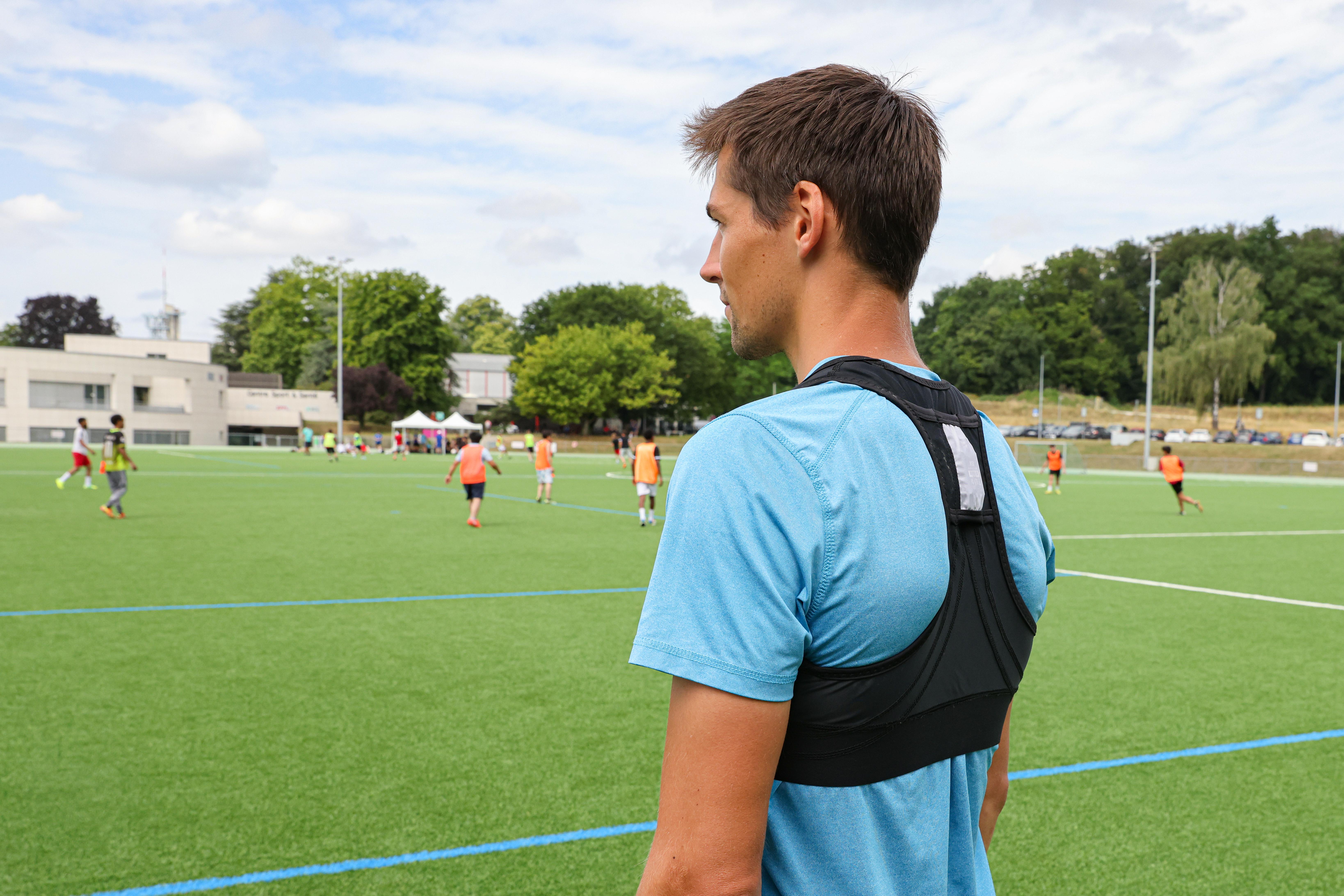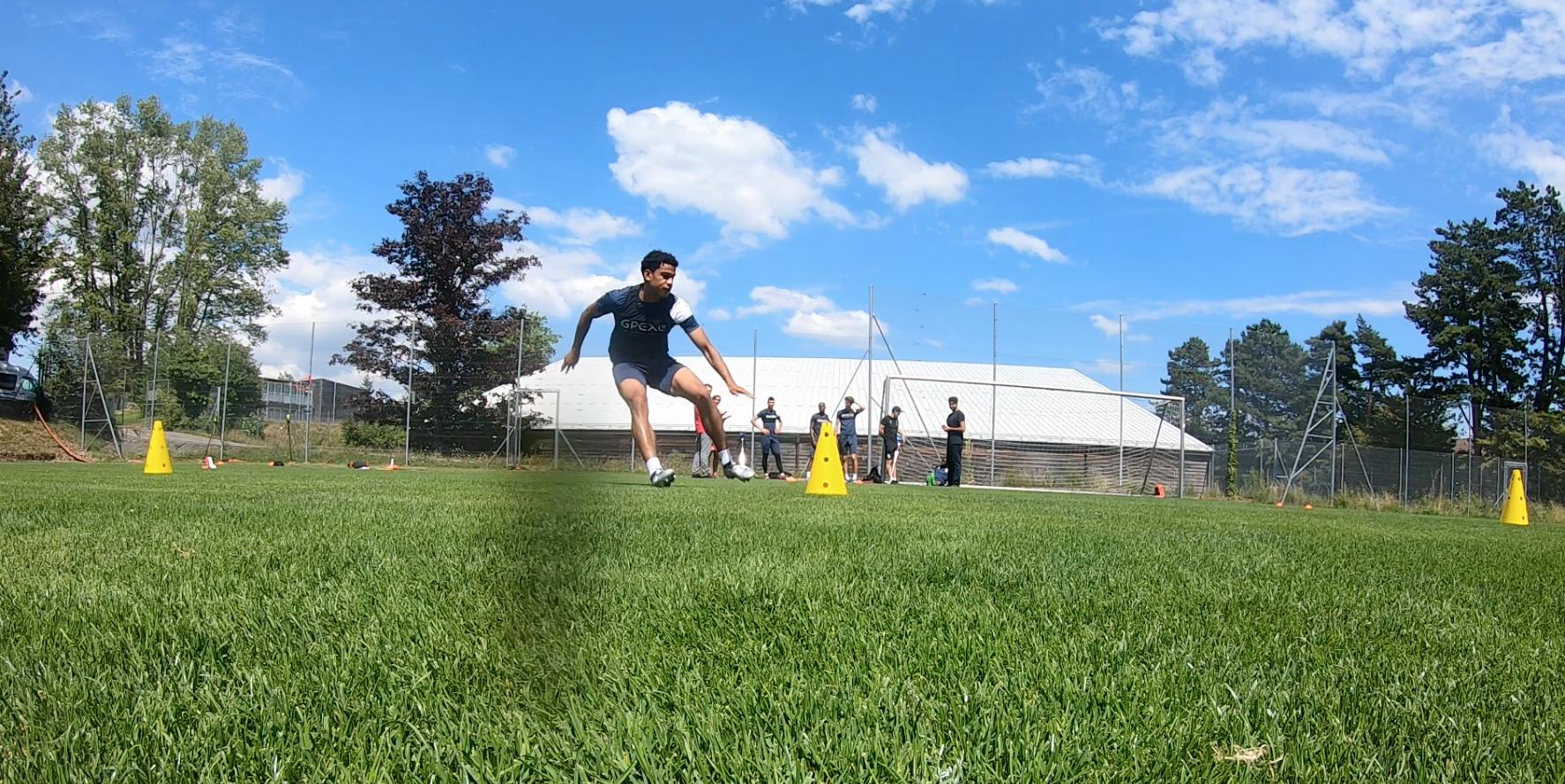Summer series - Master's project. Soccer, tennis, skiing and many other sports involve changes of direction. For these athletes, performance hinges on speed and agility.
Anything but running straight toward the goal! EPFL student Celestin Vallat has just completed his Master's project in mechanical engineering. As part of a collaborative research project with MotionLab, a Lausanne-based sports performance center, he monitored 25 professional soccer players at FC Lausanne-Sport to analyze how they performed when changing direction. The players had to complete a test consisting of five different exercises - sprinting, running backward, swerving to the right, swerving back to the left, and crouching down - all while touching cones along the way and all as quickly as possible. "The ability to change direction is important in many sports: dribbling in soccer, reaching a ball from all corners of the court in tennis, and executing movements in disciplines such as badminton and skiing," says Vallat. "At present, we're unsure of what determines how quickly athletes can make these changes. Is it largely a question of strength or technique - or a combination of the two?"
For his project at EPFL's Laboratory of Movement Analysis and Measurement (LMAM), Vallat developed an algorithm that uses data from sensors on athletes' backs to detect changes of direction. He then ran the algorithm on the data from the FC Lausanne-Sport players, looking for links with performance and examining the effect of the movements on the players' joints. "With a sensor, it's easy to detect when an athlete starts changing direction and when he stops," explains Vallat. "These data provide extremely useful insights for coaches. Previously, they knew only how long it took each player to complete a given test but couldn't differentiate between a player's performance in the individual exercises within a test."

The sensors include a gyroscope for measuring angles, since angles have a key influence on how athletes perform when changing direction. "A 180° turn and a 90° turn are very different in terms of technique," says Vallat. "We found that the impact on players' joints has a lot to do with the movements they make as they get ready to change direction. For a 90° turn, it's important to lean your chest slightly backward to prepare for the impending shock, and to slow down in the last few steps before turning. Coaches will be interested in how athletes bear their weight, whether they're quicker at turning right or left, and whether they underperform when running backward. This kind of information can help coaches develop more personalized training programs and avoid injury."

Detecting injuries and fatigue
Ligament tears are among the most common injuries associated with changes of direction. "With sensors, we can detect fatigue during deceleration and spot asymmetries associated with knee injuries," explains Vallat. "Athletes tend to compensate when they're injured, as a way to reduce strain on an affected joint. We can see this play out in how long they take to change direction or how much weight they bear on an injured leg."
Vallat concludes: "As researchers, we're interested in finding a metric that best captures how athletes perform when changing direction. The data we collected in our study tell us more about the key factors that affect this performance. But we don't yet know whether a there's such a thing as a 'perfect' technique."






